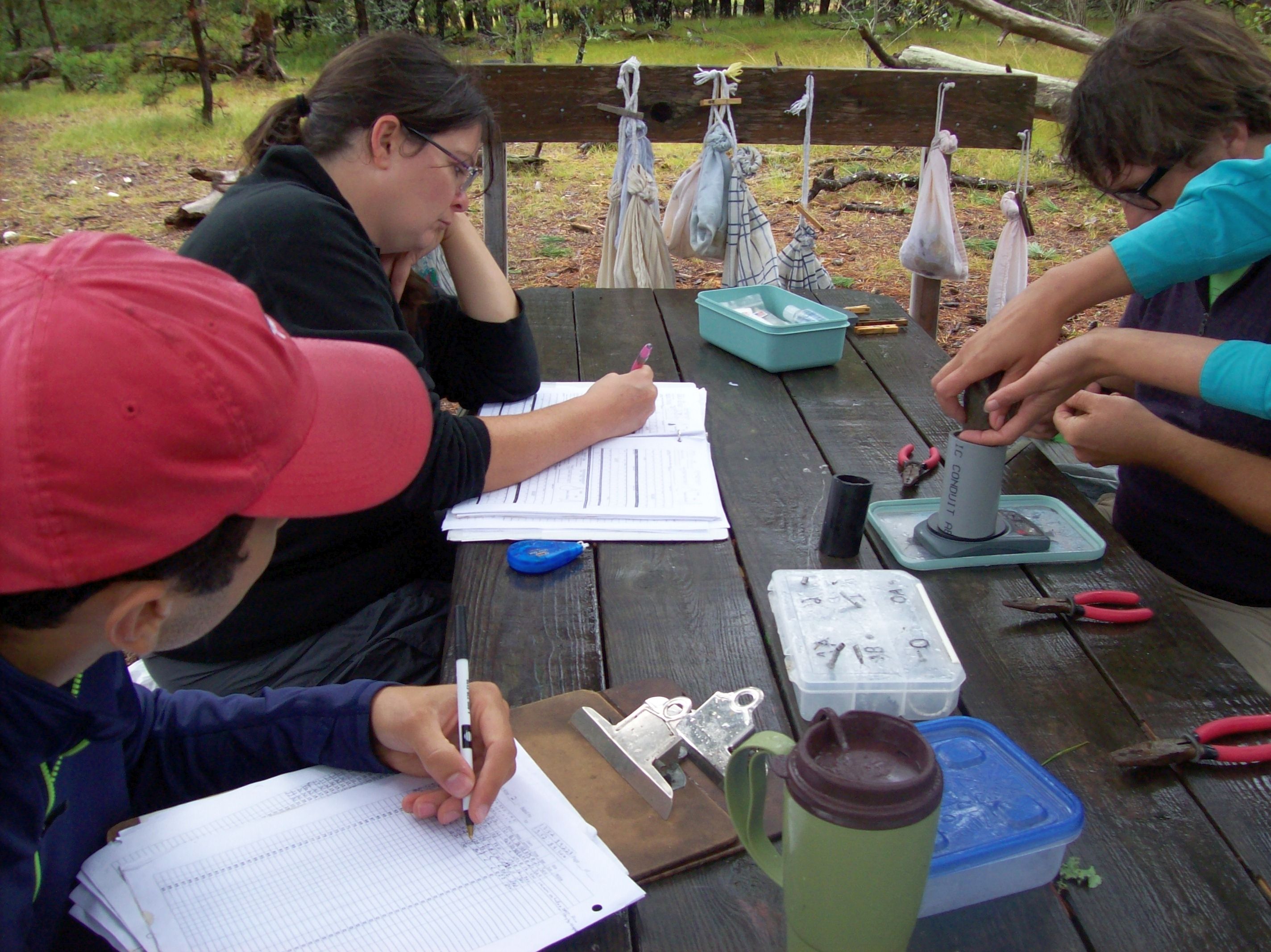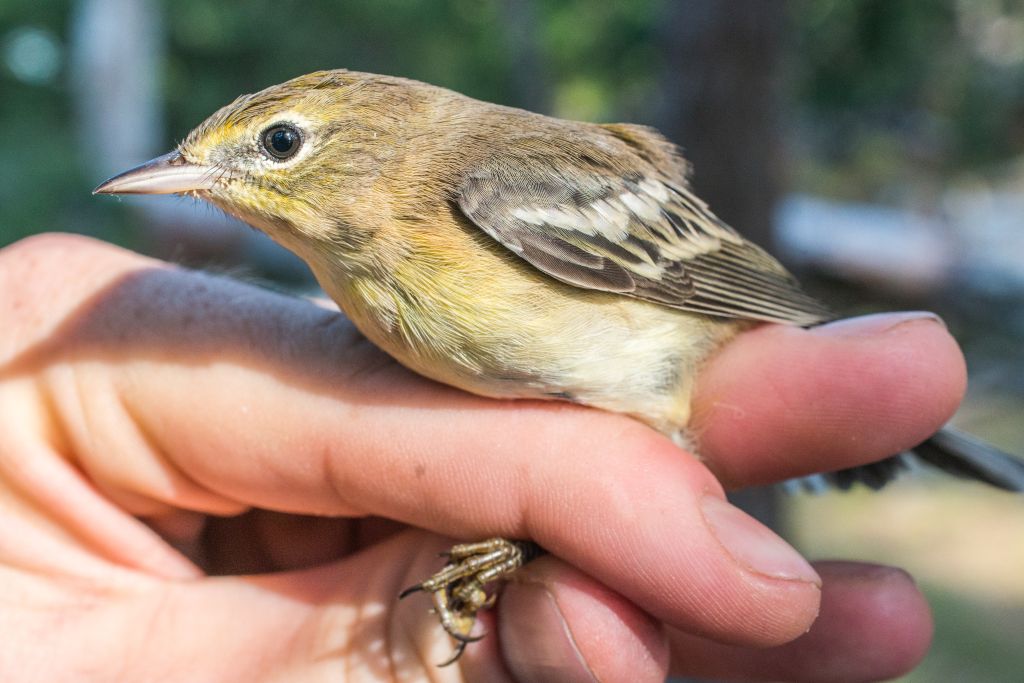One of the best things about the return of bird banding at Wellfleet Bay is the increasing amount of data.

It’s all about the data: scribes carefully record a bird’s weight, wing length, body condition, and whether the bird hatched in the summer or is an adult.
Our master bander James Junda has completed his report for the fall 2016 season. It was his third fall migration here. Besides reporting total number of birds, species, number of species per 100 net hours (to compensate for the number of nets operating on any given day) and seasonal diversity, James also looks for trends.

Female Pine Warbler
For instance, he reports, Pine Warblers were unusually abundant last fall, ranking third among the most common captures compared to tenth in 2015 and 2014. Given that change, it’s probably fairly safe to speculate the birds had a pretty good breeding season.
Same might be said for American Goldfinches, which for the first time at the station was the most common species captured compared to previous fall migrations when they ranked third and sixth, respectively.

Numero Uno capture for Fall 2016– this yellow fellow was born last summer and will need more time to get that polished American Goldfinch look.
You might assume that with goldfinches being so common they’d turned up in the mist nets almost daily. Not necessarily so. In a great example of how new birds blow into town one day, while others seem to disappear overnight, goldfinches weren’t here in great numbers until mid to late October, when they were number 11 on the top 12 list. But just two weeks later—they shot up to number one. There was a similar pulse of Yellow-rumped Warblers. They suddenly popped up in second place on the top 12 list in the first half of October.
Although not nearly as numerous as yellow-rumps or goldfinches, other species saw increases over previous years. Palm Warblers seemed relatively plentiful—18 this year compared to just 5 and 3 banded the previous years. Twenty Black-throated Blue Warblers were captured; before, we’d only seen about 2 each year. And little kinglets were big: both ruby-crowned and golden-crowned more than doubled their numbers.

A big fall for kinglets! 51 Ruby-crowned and 32 Golden-crowned Kinglets caught in 2016 versus 14 for each species in 2015. (photo by Dan Lipp)
Finally, some species were fewer in number this fall. House Finches were down for a second consecutive fall; so were White-throated Sparrows and Field Sparrows.

Field Sparrow. Only 12 captured in fall of 2016 versus 20 in 2015 and 23 in 2014.
Cause for worry? According to Mass Audubon’s State of the Birds Report, birds that breed in grasslands and shrubby habitats, such as the Field Sparrow and White-throated Sparrow, are on the decline because of habitat loss. But House Finches are still pretty ubiquitous. Still, it’s the steady accumulation of data that over time reveals significant trends. It’s exciting to be playing our part.
Summary of the Season: Just the Stats
Total Number of Species Banded 75
Total Number of Newly Banded Birds 1432
Top 10 Species of Fall 2016: American Goldfinch, Black-capped Chickadee, Pine Warbler, Gray Catbird, Yellow-rumped Warbler, Blue Jay, Northern Cardinal, Ruby-crowned Kinglet, Eastern Bluebird, Song Sparrow, Blackpoll Warbler.

